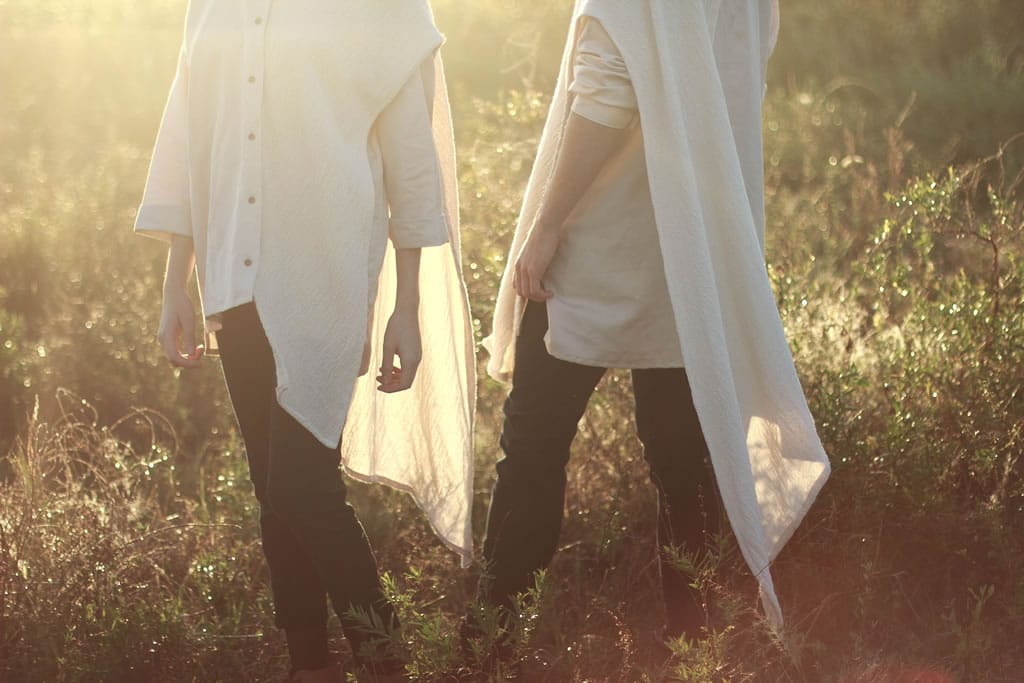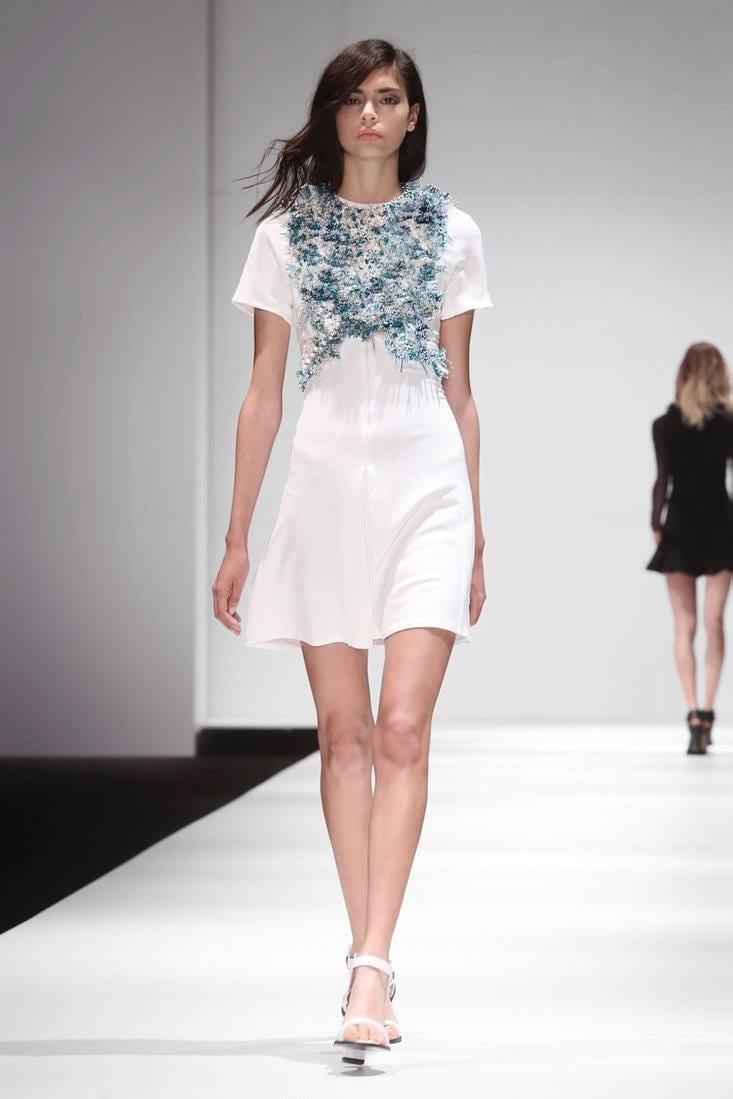In history, the change of decade frequently dictates the start of a new era. In fashion, this can be easily seen with the differences in style that emerge every ten years: the fifties were a world apart from the sixties and so on. However, the start of the new millennium saw little change regarding aesthetics, and nowadays fashion is not just one trend but a handful of different styles where everyone can find their preferred. Nevertheless, some changes can be seen in the way fashion is being approached and thought of: ecology, ethics and technology have been playing an important part in the way we think about clothing. New perspectives are put under the spotlight and new designers are making their way into the industry.
In Argentina, the 00’s saw the birth of the first experimental designers who changed the face of fashion. Kostume, Jessica Trosman and Martín Churba, among many others, were part of this movement. Even though their work is still important in the development of the industry, with the start of a new decade, a new group of young designers arose with a fresh vision and an innovative approach. 2011 was the year where Argentina’s fashion industry had a revamping and saw a breath of fresh air in the runways and magazines. It was also the year where a process that started a couple of years ago was consolidated and the emerging designers landed in the fashion scene as a group. Even though ten years seems to be the duration of fashion cycles, this new phase wasn’t a coincidence because there were many factors that encouraged the development and the expansion of the local fashion scene.
In the first place, the political and economical measures that protected the local industry were the biggest action that provided the conditions to start this period. Although this has its pros and cons, the reality is that nowadays there are more independent designers than fifteen years ago. Apart from the economical measures, different initiatives from public and private institutions motivated the growth of this group of creators, who started their brands with strong ideas and identities. In the last couple of years, a number of programmes helped the expansion of local design abroad and locally. Some of them are Semillero UBA -a contest organized by the University of Buenos Aires where two designers are selected to be featured in Buenos Aires Fashion Week- Fashion Edition BA and Pasarela BA, among many others.
Enlarge

Valeria Fiterman
Organizations such as the Metropolitan Centre of Design (CMD in Spanish) and the National Institute of Industrial Technology (known in Spanish as INTI) play an important part in the development of the fashion industry. The role of these programmes is to develop a strong national fashion identity which can be not only recognized abroad, but to create a local fashion network where designers from all over the country can feel identified. Thankfully, a result can be seen in the fact that more regions are being featured in the fashion scene and their talents are having the opportunity to show their creations.
Both of them provide independent designers with economical and technical help: the aim of these institutions is to accompany the creators in every step of their creative process: from the selection of materials to marketing. In addition, CMD and INTI are in charge of promoting Argentinian fashion talent across the world. While CMD organizes Pasarela BA, a contest were four designers are chosen to be featured in Buenos Aires Fashion Week (BAFWeek), INTI selects and works with a handful of designers to send them abroad to sell their creations.
Another change that could be seen in this last decade, was the fact that designers from other regions apart from Buenos Aires started to be featured on runways. Argentina is one of the largest countries in the world and there is a lot of cultural diversity: from native traditions to European influences, the country has an eclectic heritage that can be seen in every corner of its territory. However, regarding fashion, Buenos Aires was the only city that was put in the spotlight by the media. Although Buenos Aires has a great creative environment and a cosmopolitan town, many designers were left out of the industry due to living in other regions that are hardly seen in fashion editorials and magazines. Luckily, this started to change some years ago.
Enlarge

Courtesy of Kalu Gryb
In 2013, the National Institute of Industrial Technology (known in Spanish as INTI) published Mapa de Diseño (Map of Design), an e-book where 101 Argentinean designers are featured, showing the vast diversity of the fashion industry. This publication was a milestone because it showed the best creators of Argentina, from established to young designers. In addition, the e-book features articles on Argentina’s identity and how the encounter of cultures make our country so special and unique. It presented a complete review of the country and allowed designers from all the provinces to get national and international recognition.
All these organizations, contests and initiatives made possible the initiation of this new decade in Argentina’s fashion. Nowadays, designers have more resources available to create their collections, from social networks to new textiles and technologies, this new group has a vast array of opportunities in front of their eyes and the chance to explore and expand their business around the world.
At the runway
The start of the decade saw the launch of a new generation of designers. They arrived at the same time, creating a group of emerging talent with innovative visions and creative use of techniques and materials. As a result, their designs have a strong identity which is explored in every collection. We selected three of them to explore their imagination.
Schang Vitón is the brand created by Julia Schang Vitón which was presented for the first time at BAFWeek in 2012. This designer explores the interaction between the human body and clothing though movement. With a strong oriental influence and complex work with deconstruction, her loose-fitting silhouettes allow the free movement of the body, without constrictions. Schang Vitón is all about constructive details and experimentation with textiles and their textures. Although the designers works with neutral and muted colors in her collections, all the seasons she surprises with peculiar combinations of cotton, metallics, patent textiles and chiffon, for example.
Enlarge

Courtesy of Marcelo Giacobbe
Sophistication and femininity are two words that describe the designs of Marcelo Giacobbe, who launched his brand in 2012, after graduating from University of Buenos Aires and studying in Denmark. His first collection was acclaimed by local media and the designer quickly became a favourite. Giacobbe’s aesthetics are all about the combination of opposites: femininity and masculinity, sharp tailoring and the delicacy of lingerie exist side by side to create an urban feeling in pret a couture pieces.
From Chaco to the world, Kalu Gryb is the designer behind the eponymous brand which is inspired in nature and the desire for a calmer life, respecting the natural rhythm of the body. Modest and rustic are two words to describe this brand that uses organic textiles from Chaco such as cotton, linen, leather and wool. The textiles and the use of a neutral color palette, influenced by the scenery of the region, are put together into comfortable pieces that play with asymmetry and geometry. The brand was awarded in 2013 by INTI and later was part of London Fashion Showcase in 2014.
